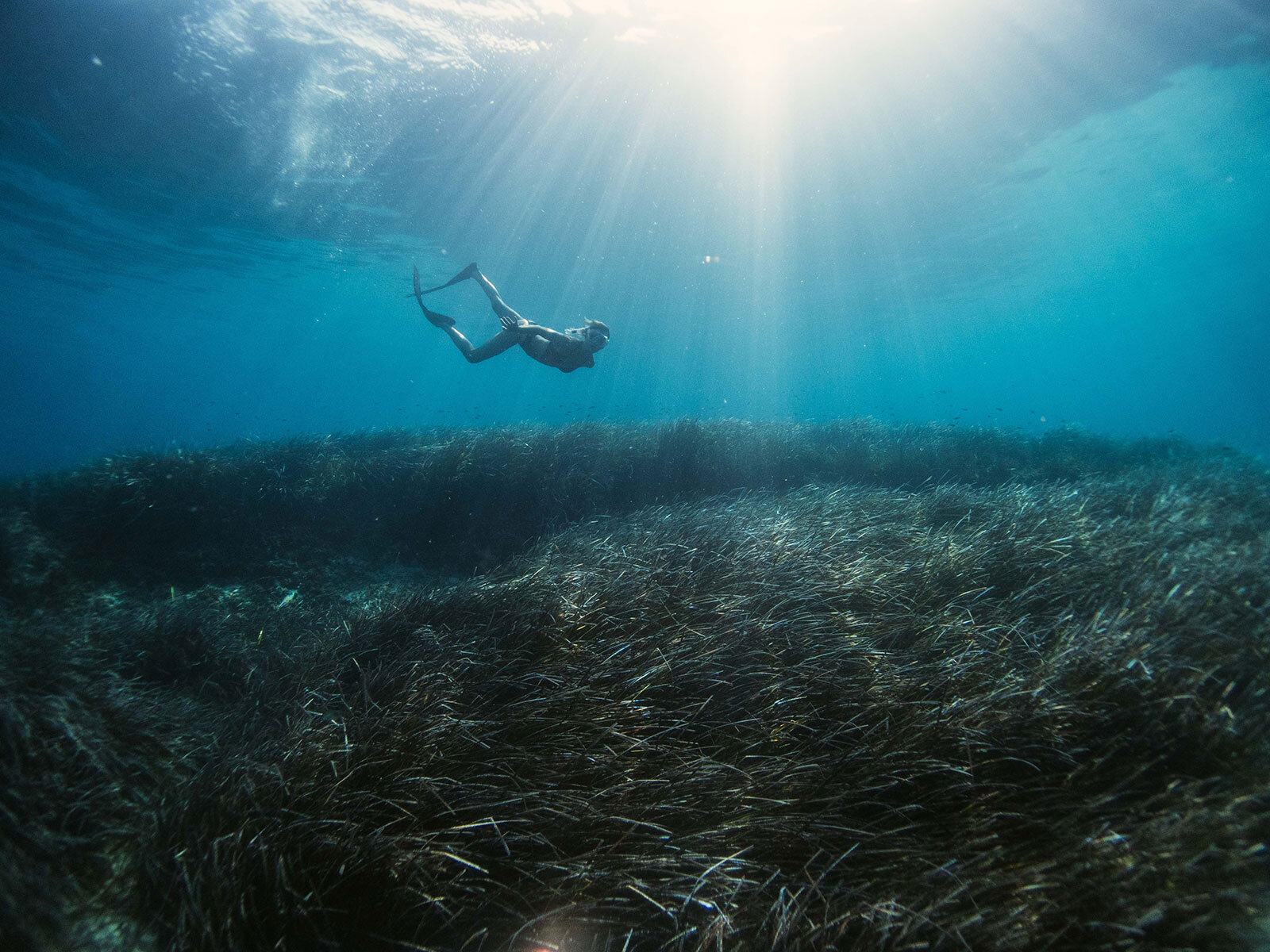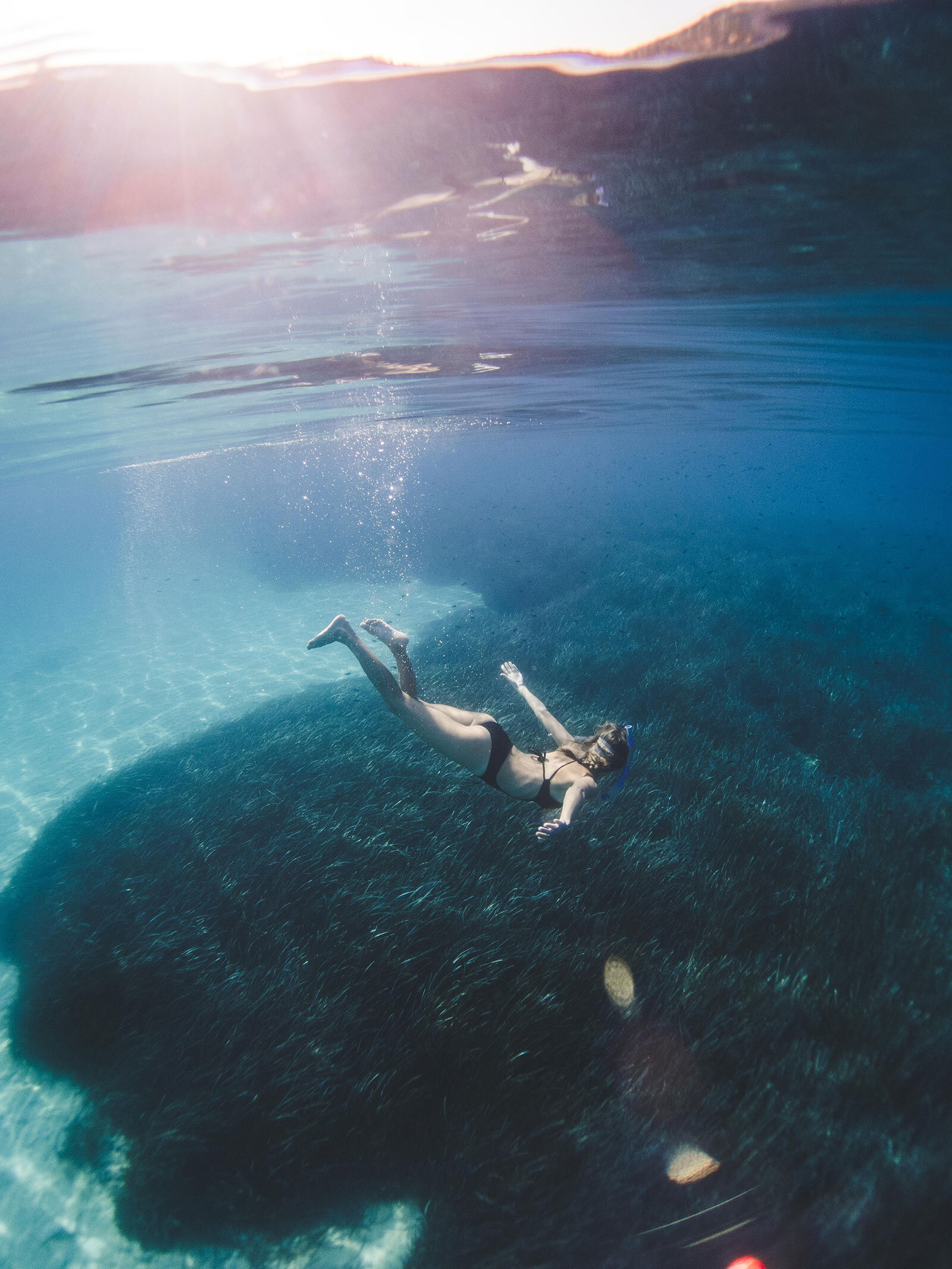An Unlikely Marine Hero: How Seagrass Can Help Travelers Tackle Climate Change
By Alex Ruelas
Do you ever think about seagrass? Even if you are an ocean lover, odds are you do not pay much mind to these modest plants. After all, they grow silently underwater, unassumingly dancing along with the tide. However, these wonderful creatures are vital to the health of the marine ecosystem and the core of a cutting-edge strategy to restore the seas and protect people.
Seagrasses are the only flowering plants that grow in the ocean. They are cousins of terrestrial plants that, somewhere along their evolutionary path, reclaimed the seafloor as their own. There are about 60 species of them. Together they form meadows, underwater grasslands close to the surface that sustain biotic communities as rich and diverse as coral reefs.
Many animals, big and small, depend on these meadows. Sea turtles, manatees, crabs, mollusks, and many others feed directly on seagrass. Others feed on the herbivores and create complex food chains that provide for both animals and people, who rely on seafood for protein and livelihoods. An explosion of life starts with something as simple as these dancing blades.
Another cool thing about seagrass – it can absorb a lot of carbon. And I mean a lot. A healthy seagrass meadow can absorb up to 35 times more carbon than the Amazonian rainforest, sucking it out of the atmosphere and storing it underground through natural processes. These ecosystems are crucial to mitigating climate change and supporting the lives of millions of people around the planet.
However, they are disappearing fast. Along with mangrove forests and other coastal wetlands, seagrass is declining at a staggering rate, which puts climate adaptability and many lives at risk. It’s time to fix that.
Protecting seagrass, sinking carbon
Figuring out a way that we as individuals can contribute to fighting climate change is tricky. The question of how we can tackle an issue that seems too big to grasp is indeed a hard one. To try and find an answer, Maya Luxe has partnered with The Ocean Foundation, one of the world’s largest ocean conservation NGOs, to be part of their Seagrass Grow project. This initiative has a simple premise: protect and restore seagrass meadows to mitigate climate change and revitalize ecosystems.
The Ocean Foundation came up with an innovative tool they call the Blue Carbon Calculator. This online program allows everyone – businesses and individuals – to estimate their carbon footprint and how much seagrass would take to offset it. Then, it enables users to make an equivalent donation that is directly invested in restoring coastal meadows and financing environmental education.
Their most recent project started in 2019 in the Jobos Bay National Estuarine Research Reserve, Puerto Rico. This protected area, which comprises seagrass meadows, coral reefs, and mangrove forests, is home to endangered species such as the Antillean Manatee and is a vital source of income for local communities. Further, it forms a natural barrier that protects the coast from storms, such as the devastating hurricane Maria that hit the island in 2017.
Maya Luxe has already started offsetting its carbon footprint. The Blue Carbon Calculator has allowed us to assess our impact and helped us finance conservation work that benefits people and nature. Now, we are encouraging travelers to do the same.
When we travel, our carbon emissions can multiply. If we consider flights, ground transport, and our base energy consumption, which is likely higher than at home, we will notice a holiday can put a lot of CO2 in the atmosphere. Some emissions are almost inevitable, embedded in everything from food to fuel. And while we can take several steps to travel more sustainably, offsetting our unavoidable footprint can transform our vacations into positive action for the Earth's future. It is easy. Just calculate your emissions and support seagrass restoration to help keep the oceans alive and locking carbon in the ground.
We are committed to taking care of our planet. Very soon, we will announce more partnerships that will contribute to restoring seascapes and helping underwater ecosystems thrive (keep an eye out for upcoming events!). Because, even if we do not often notice them, there are many creatures like seagrass that silently support life. Just by idly moving back and forth with the waves, lolling about under the surface, they are a direct connection between us and the healthy blue of the sea.






















